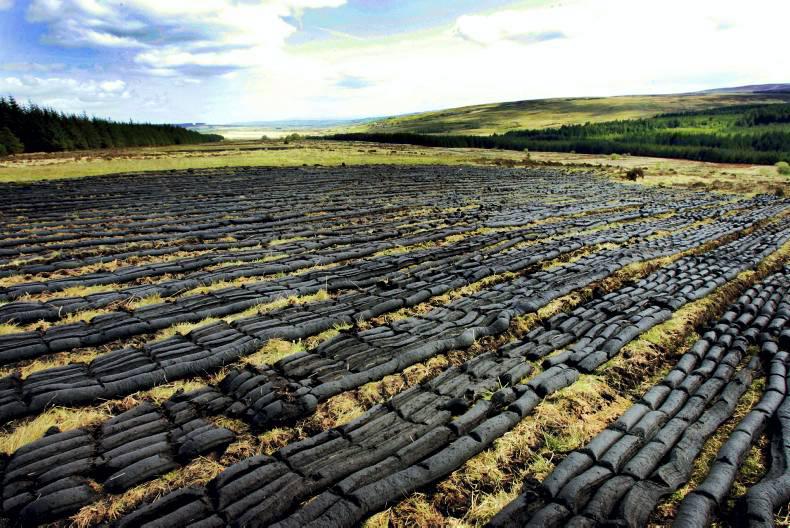The restoration of active raised bogs across Ireland’s midlands in counties Offaly, Roscommon, Galway, Cavan, Meath and Westmeath as well as Longford, has been selected for funding in the latest round of support from LIFE. The project aims to secure local community cooperation, raise water levels to create the necessary conditions for active raised bogs, remove regenerating trees and shrubs, and put in place fire protection measures. Restoration work will improve a total of 2,649ha of raised bog habitat.
This means the communities around the region will see funds available for construction works such as raising water levels and restoring the natural condition of this increasingly rare habitat. The project will run from 2016 to 2020.
The 12 SAC sites which will be part of the Restoring Active Raised Bog LIFE project are as follows:
Killyconny Bog, Cavan and MeathClara Bog, OffalyFerbane Bog, OffalyMongan Bog, OffalyMoyclare Bog, OffalyRaheenmore Bog, OffalySharavogue Bog, OffalyCarrowbehy/Caher Bog, RoscommonDerrinea Bog, RoscommonGarriskil Bog, WestmeathCarrownagappul Bog, GalwayArdagullion Bog, LongfordActive raised bogs (as opposed to the more common blanket bogs) are unique to the midlands of Ireland and have been referred to as Ireland’s rain forest, being of great importance for biodiversity, flood control and control of carbon emissions.
The areas of active raised bogs on protected SACs in Ireland decreased by 38% between 1995 and 2011 – the main reason being the pressure of turf cutting.
The EU’s LIFE programme supports nature conservation and climate action projects across the EU. The conservation status of active raised bogs in Ireland is under increasing pressure due to a long history of mismanagement, most notably turf cutting and associated drainage. It is estimated that there has been a 99% loss of the original area of actively growing raised bogs; while only about 1,650ha of the remaining intact high bog can now be classified as active raised bog.
The Department of Arts, Heritage and the Gaeltacht (DAHG) oversees the conservation, preservation, protection and presentation of Ireland’s heritage and cultural assets. Within the organisation, the National Parks and Wildlife Service (NPWS) section of the Department manages the Irish State’s nature conservation responsibilities under national and European law, including the designation and protection of Natura 2000 network sites.
Read more
Seven turfcutters relocated in the past year - Naughten
The restoration of active raised bogs across Ireland’s midlands in counties Offaly, Roscommon, Galway, Cavan, Meath and Westmeath as well as Longford, has been selected for funding in the latest round of support from LIFE. The project aims to secure local community cooperation, raise water levels to create the necessary conditions for active raised bogs, remove regenerating trees and shrubs, and put in place fire protection measures. Restoration work will improve a total of 2,649ha of raised bog habitat.
This means the communities around the region will see funds available for construction works such as raising water levels and restoring the natural condition of this increasingly rare habitat. The project will run from 2016 to 2020.
The 12 SAC sites which will be part of the Restoring Active Raised Bog LIFE project are as follows:
Killyconny Bog, Cavan and MeathClara Bog, OffalyFerbane Bog, OffalyMongan Bog, OffalyMoyclare Bog, OffalyRaheenmore Bog, OffalySharavogue Bog, OffalyCarrowbehy/Caher Bog, RoscommonDerrinea Bog, RoscommonGarriskil Bog, WestmeathCarrownagappul Bog, GalwayArdagullion Bog, LongfordActive raised bogs (as opposed to the more common blanket bogs) are unique to the midlands of Ireland and have been referred to as Ireland’s rain forest, being of great importance for biodiversity, flood control and control of carbon emissions.
The areas of active raised bogs on protected SACs in Ireland decreased by 38% between 1995 and 2011 – the main reason being the pressure of turf cutting.
The EU’s LIFE programme supports nature conservation and climate action projects across the EU. The conservation status of active raised bogs in Ireland is under increasing pressure due to a long history of mismanagement, most notably turf cutting and associated drainage. It is estimated that there has been a 99% loss of the original area of actively growing raised bogs; while only about 1,650ha of the remaining intact high bog can now be classified as active raised bog.
The Department of Arts, Heritage and the Gaeltacht (DAHG) oversees the conservation, preservation, protection and presentation of Ireland’s heritage and cultural assets. Within the organisation, the National Parks and Wildlife Service (NPWS) section of the Department manages the Irish State’s nature conservation responsibilities under national and European law, including the designation and protection of Natura 2000 network sites.
Read more
Seven turfcutters relocated in the past year - Naughten







 This is a subscriber-only article
This is a subscriber-only article










SHARING OPTIONS: